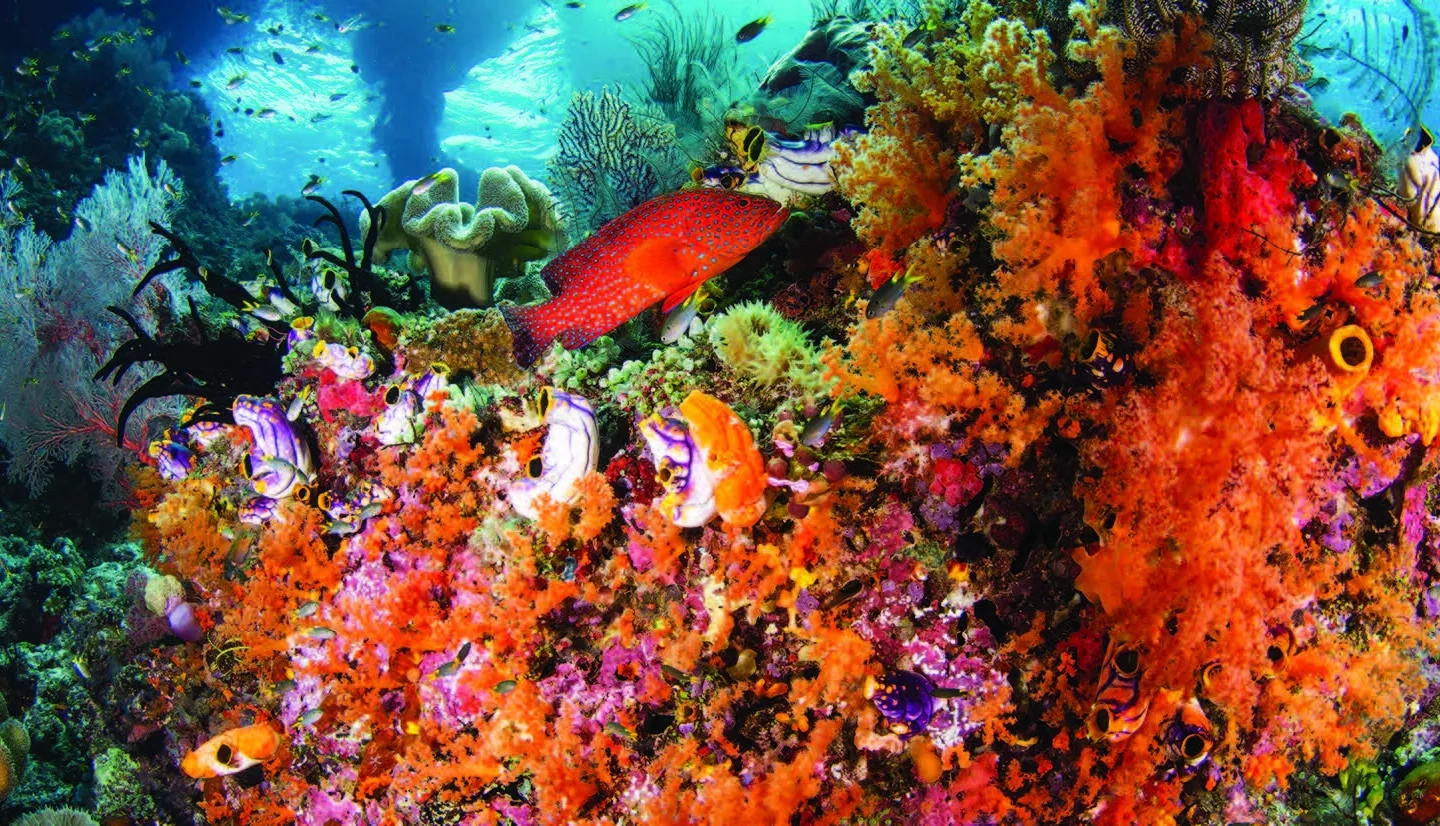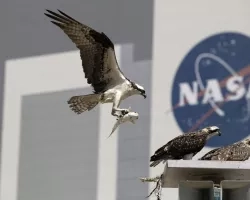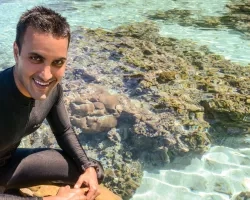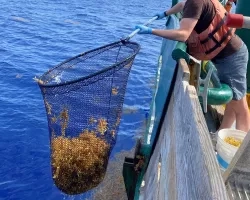SATELLITES ARE HELPING PRESERVE THE HEALTH AND BEAUTY OF CORAL REEFS
Coral reefs are some of the most diverse ecosystems on Earth. Known as the “rainforests of the sea,” they are home to more than a quarter of all marine species. Yet the beauty and vitality of the coral reef environments are threatened—and the reasons are numerous. Rising water temperatures due to climate change, land-based pollution, and indiscriminate fishing practices are the primary threats to coral reef health. Recreational activities like boating, scuba diving, and snorkeling, if done carelessly, can also seriously stress coral reefs. If these stressors continue, they can lead to coral bleaching, and recently the world’s corals have been facing more frequent and severe bleaching events.
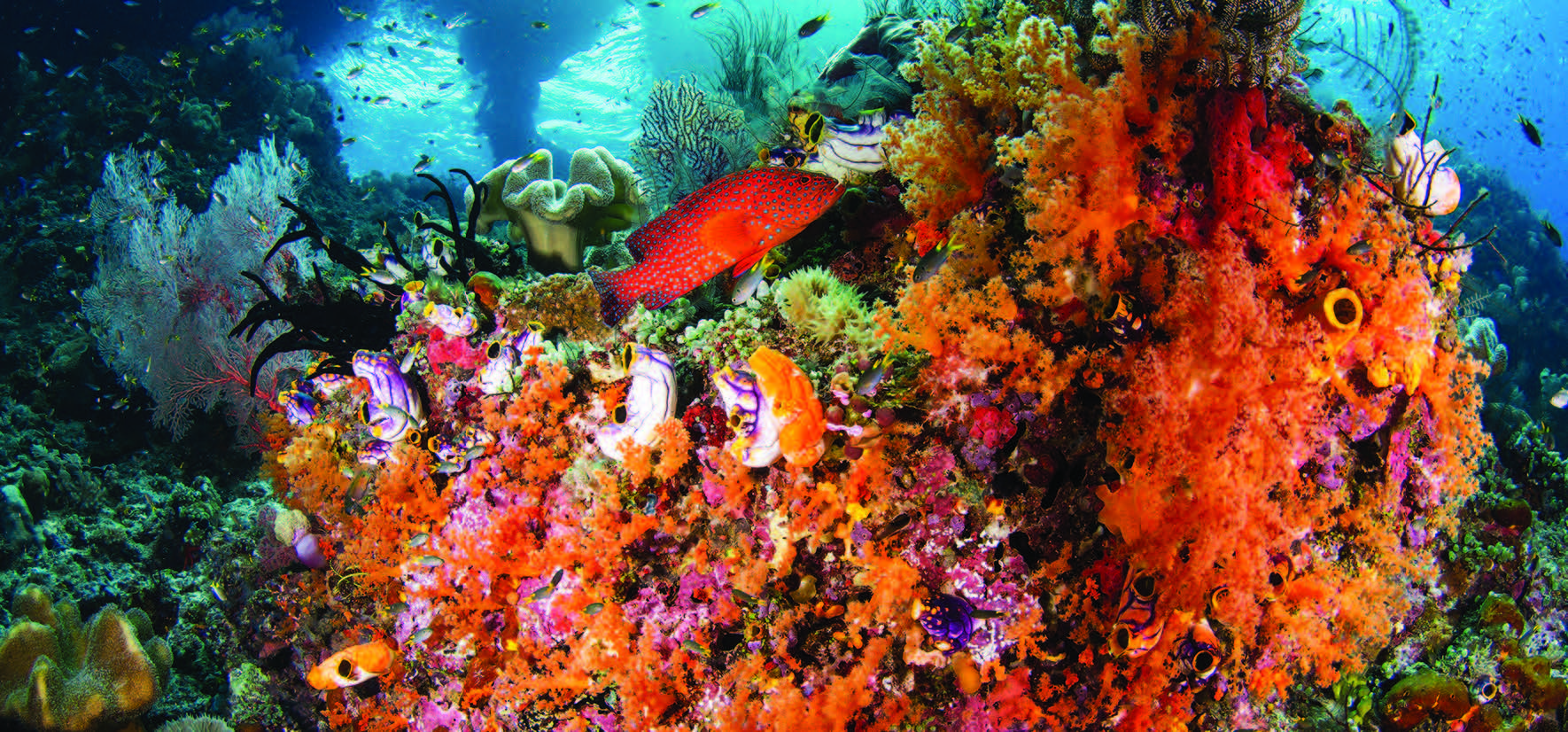
When corals bleach, they lose their color because they lose symbiotic algae that live inside the coral animal tissue. When this happens, the coral animal is unable to grow, reproduce, and build its limestone skeleton making it more easily damaged or killed. “Some diseases occur when corals lose their resistance to pathogenic bacteria and fungi, that may be natural,” noted Frank Muller-Karger, biological oceanographer at the College of Marine Science, University of South Florida. “But in other cases, diseases are related to human discharge of sewage and other refuse into coastal waters.”
To maintain coral health, reef managers track global, large-scale temperature fluctuations, allowing them to assess conditions and monitor trends across the world’s oceans. Recent advances in satellite images have given managers finer-scale details and insights to carry out more immediate, targeted actions. Those include rescuing corals at risk of fatal bleaching, redirecting divers or snorkelers to unstressed reefs, and educating the public about the damage that fishing in stressed areas may cause.
When bleaching becomes imminent, however, “reef managers can implement various strategies…to reduce or mitigate the potential negative impacts additionally caused by human use,” said Beth Dieveney, Deputy Superintendent for science and policy at the Florida Keys National Marine Sanctuary.
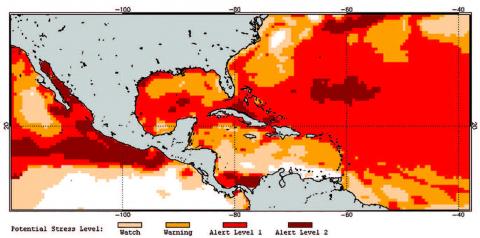
An important resource is the NOAA Coral Reef Watch (CRW) program, which uses satellite data, climate models, and in situ observations to provide bleaching alerts to reef managers and scientists, as well as the general public. CRW’s satellite-based products include near-real-time and historical data and images of temperature and temperature anomalies for monitoring the risk of coral bleaching and disease in coral reef ecosystems. They also issue bleaching outlooks based on expected climate conditions up to four months in advance.
In a partnership, NASA has collaborated with NOAA to improve the CRW program and its products. The College of Marine Science of the University of South Florida and CRW staff worked together with NASA’s Ames Research Center to develop higher spatial and temporal resolution satellite data products that are now routinely included in the CRW analyses of global coral reef conditions.
Building on the 50-kilometer products that CRW already provided, the project created global, 5-kilometer sea surface temperature products based on the observations from NASA, NOAA, and international geostationary and polar-orbiting satellites. The team also created and is continuously validating finer-scale, 1-kilometer products based on NASA and NOAA real-time data for the Gulf of Mexico, Florida Keys, and Caribbean Sea.
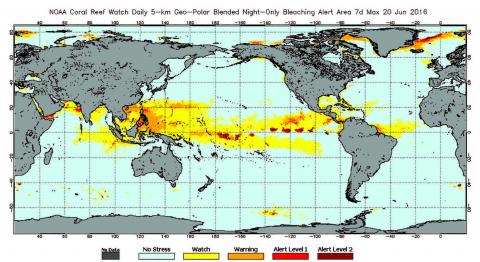
CRW’s new products now allow Florida reef managers to better understand conditions of offshore waters under their jurisdiction, as well as within actual reef ecosystems. The new products also provide finer-scale satellite data than the old products and directly monitor more than 98 percent of coral reefs around the world.
In fact, during the project, researchers and reef managers reported widespread coral beaching in the summer and fall of 2014 and 2015 in the Florida Keys and Hawaii, as well as in the U.S. territories of Guam, and the Commonwealth of the Northern Mariana Islands. The new CRW products accurately predicted and helped monitor coral bleaching in all of these regions.
As a result of these improvements, reef managers are able to take earlier and more targeted approaches to protecting coral ecosystems through methods such as reducing the allowable pollutant loads, alerting recreational dive vessels to change locations, or rescuing rare corals before they are killed by bleaching.
“One example would be working with local diving and snorkeling operators to redirect on-water tourist activities away from natural reef areas, normally subject to high visitation, to artificial reefs and shipwrecks,” said Dieveney. “This could reduce unintentional physical damage to corals until favorable thermal conditions return.”
CRW also allows the public to help support reef health and collect information. “In times of severe thermal stress, that higher resolution helps us manage where we request researchers and citizen scientists alike to look for potential thermal stress in corals,” Dieveney added. “Also, over the long term, it may help reef managers refine where they place temperature-monitoring devices to help better correlate remotely sensed data.”
Frank Muller-Karger and Mark Eakin lead this project.
To learn more about Coral Reef Watch, visit http://coralreefwatch.noaa.gov.
